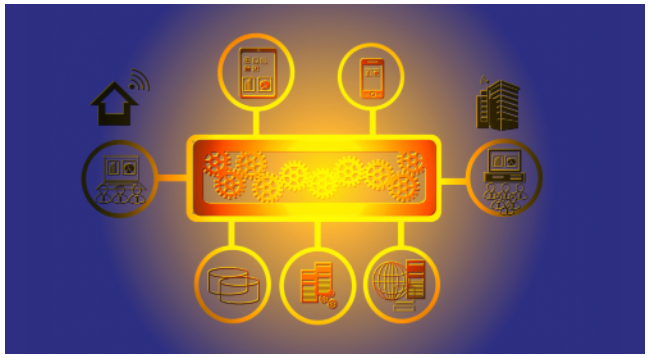
Data is the lifeblood of modern businesses. It informs decisions, guides strategies, and bolsters customer experiences.
But there’s also a downside to data. As the amount of information companies are able to collect, store, and analyze continues to grow, data can become unwieldy and difficult to manage. This is especially relevant for large enterprise organizations dealing with massive amounts of distributed data, often in different formats and structures.
These challenges are causing enterprise data integration to become a critical operational focus. Today we’ll explain what enterprise data integration means, and how modern businesses are approaching it.
What is Enterprise Data Integration?
Enterprise data integration refers to the centralization of multiple sets of business data and information — often spanning various distinct sources and formats — into one consolidated, unified interface. The “enterprise” distinction signifies that these initiatives are, by definition, more complex and expansive in scale than standard data integration practices.
Let’s explore some of the reasons for the increased focus on enterprise data integration, and what types of outcomes can be expected from this type of initiative.
Why Enterprise Data Integration Is Important
As the numbers of data sources enterprises need continue to grow, organizations worldwide are seeking to solve the challenge of bringing all that data together. Those that take a proactive approach are gaining a key competitive advantage at a time where others are still trying to wrangle and manage copious amounts of data.
Here are some indicators that it may be time to look into your options for enterprise data integration:
- Data is Isolated and Siloed. Your data sets may be stored in different places, owned by different business units, and contained in different formats or structures. This can make it very difficult to gain a unified view or analyze information in a consistent way.
- IT is Overwhelmed. Even the most talented IT pros can find it difficult to manage and connect data at the scale required for enterprise organizations. In many cases, powerful enterprise data integration tools are flat-out necessary. Even when IT is capable of handling this directive, adding new data sources and managing existing integrations to make sure nothing breaks can be time-consuming, tedious, and a strain on resources.
- Data Analysis and Insight Generation Moves too Slow. Manual processes often don’t keep pace with the speed of modern business. Automation and intelligence capabilities are essentially table stakes when it comes to data management today. Enterprise data integration empowers real-time decision making and faster analytics.
- The Cloud and On-premises Divide Causes Issues. The arrival of the cloud brings many conveniences and efficiencies, but can also pose challenges for cohesion with in-house data and applications. Enterprise data integration is designed to support the new world of hybrid IT, connecting both legacy on-premises systems and newer, cloud-based apps.
- Global and Regional Regulations are Tightening. As compliance becomes a greater focus and priority for businesses across the world, distributed and disconnected data presents complications. Data privacy regulations such as the EU GDPR and CCPA are becoming the new norm. Enterprise data integration makes it far easier to track applications and systems across geographies to become — and stay — compliant with all the relevant regulations.
Enterprise Data Integration Outcomes
When organizations are able to effectively implement enterprise data integration solutions, the benefits are numerous. Common enhancements achieved by such efforts include:
Faster Time to Value: With the right architecture in place, future integrations are accelerated and organizations are able to derive insight and value from data much more quickly. This can significantly bolster the bottom line.
Increased Productivity: Through reduced burden on IT, and operational shortcuts owing to reusable business logic and templated workflows, businesses are able to harness more output from their teams.
Greater Visibility: A centralized dashboard provides a clear view of integration activity for streamlined reporting and synchronized insight for stakeholders.
Readiness for What’s Next: New data sources and applications are routinely entering the enterprise fold. A strong infrastructure, built through the right enterprise data integration solution, removes stress by helping organizations nimbly incorporate data, manage it, and use it for better reporting.
Stronger Lead Generation and More Opportunities: Bringing data together in a single interface assists with business development goals by clarifying market trends and shifts in demand. Disparate and disorganized data makes it far more difficult to pinpoint and act upon opportunities.
Enterprise Data Integration and Boomi
Boomi is a leader in enterprise data integration. Our integration platform as a service (iPaaS) brings efficiency to many of the world’s most prestigious organizations. The following are a few examples of the Boomi Platform in action:

